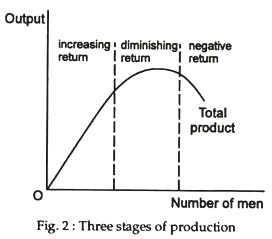A question asked by many, what is the difference between Productivity and Efficiency?
Understanding both concepts will increase your work output and the ability to achieve more by doing less and in this article, I share some tips on how you can do just that.
Productivity

The definition of Productivity is “the effectiveness of productive effort, especially in industry, as measured in terms of the rate of output per unit of input” while the definition of Efficiency is “the ratio of the useful work performed by a machine or in a process to the total energy expended or heat taken in”.
Simply put, Productivity is the measurement of your output or results. It is difficult to measure productivity as it depends on your industry and work but an example would be if you are a painter, you can see the level of output or work produced whereby you finished a painting.
Efficiency
Whereas for Efficiency, it’s about how you achieve more by doing less.
If you can finish this painting in 30 minutes instead of a day, you’re much more efficient and can probably increase your level of output (amount of paintings) which in turn increases your productivity.
How you increase your efficiency differs from the type of work you are engaging in but in this context, you can probably ask a friend or hire another painter to help you.
You may already think by now that efficiency thrives over productivity but you actually need a good balance of both.
You can be productive in what you are doing but not efficient (which kills time) as it’ll take you much longer to complete your painting or tasks, on the other hand, you can also be really efficient (hire more painters) but not productive.
Law Of Diminishing Returns

You may have probably heard of the term Law of Diminishing Returns in economics and here’s why it affects your efficiency and productivity.
We talked about how increasing your efficiency can increase your productivity but it can really backfire if you focused too much on the former.
Back to our painting context, if you were to hire more painters it may seem like your output will increase but let’s take into account if the painters were to spend some time talking to each other, sharing of brushes and equipment, generally decreasing the level of focus.
This may seem familiar to some of you as you study with your friends and find yourself not getting as much work done as you’d like and you say to yourself “it wasn’t productive”.
How Can You Optimise Both?

Personally, I found a way to optimise both my productivity and efficiency whenever I am doing work and I have been using this method for months now.
I came across this method from the notable book “The 4-Hour Work Week” which has influenced me in a huge way on how I look at work. Definitely a must-read.
The author, Tim Ferris, spoke about the “Parkinson’s Law” where a task will swell in (perceived) importance and complexity in relation to the time allocated for its completion.
In other words, your tasks will seemingly feel much more important if you allocate a certain amount of time for its completion.
At the point of writing, I have a timer counting down which gives me a “deadline” to complete this article.
A quote which I really liked from the book summarises this concept really well “limit tasks to the important to shorten work time and shorten work time to limit tasks to the important”
How Long Should The Allocated Time Be?

So how long should this “allocated time” be?
There is no rule as to how long this time should be but I would say depending on your level of focus. A broadly accepted amount of time is 90 minutes (1.5 hours) and this is the time I stick to as it is often a good amount of time to complete most tasks.
The notion is that 90 minutes is where your peak focus declines and you should take a 10-15 minutes break. If you haven’t completed your task, you can set another 90 minutes to work on it.
So what do you do in this 90 minutes?
It does not just end there, there are a few tweaks to fully optimise your productivity and efficiency.
When the timer runs down, ensure that there are no unnecessary tabs open in your browser (Law of Diminishing Returns) they act as your “extra painters” because these tabs e.g. Facebook or Youtube may distract you whenever a new notification pops up.
Only leave the necessary tabs open that will help you with what you’re doing and even so, you do not need that many information too.
This is something that I am doing and I find useful. Give it a try and let me know in the comments section if it works.
Thank you for reading and if you liked this article, here’s another one that I wrote about happiness.
See you in the next one!
Here are the links of the resources mentioned
Book: The 4-Hour Work Week
Timer I use: e.ggtimer
